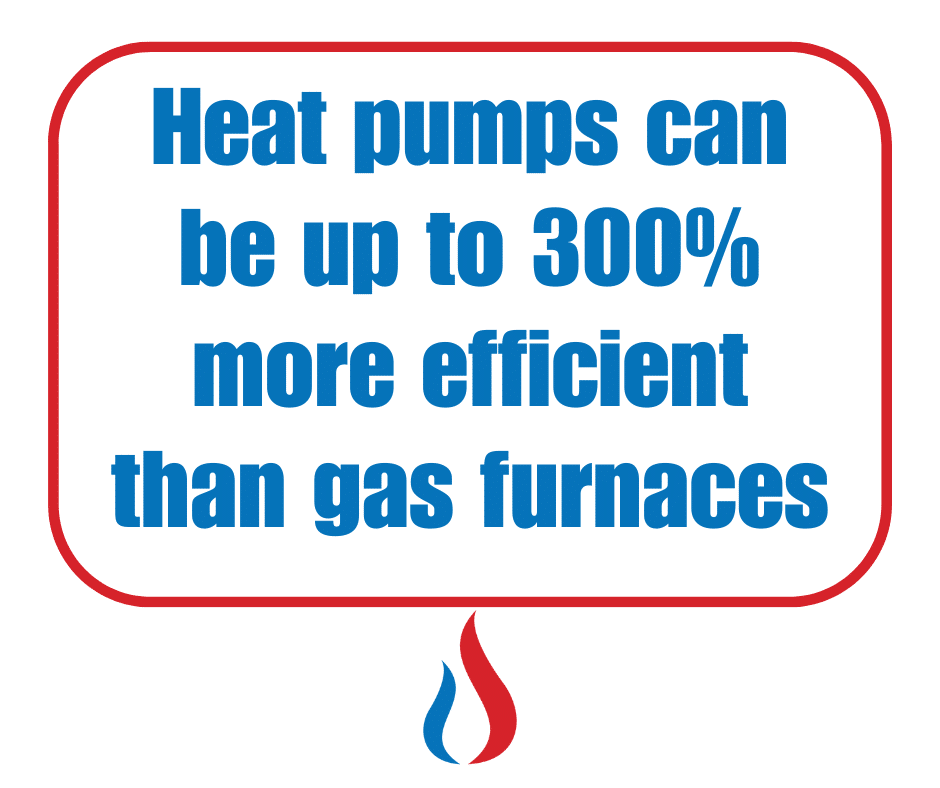California’s ambitious goal of achieving carbon neutrality by 2045 has sparked conversations around energy-efficient home heating solutions. Homeowners and property managers must now evaluate heating systems that align with environmental goals while also being cost-effective. Two prominent contenders in this space are heat pumps and gas furnaces. Both have their pros and cons, but the push for reduced carbon emissions and rising energy costs make heat pumps an increasingly attractive option for Los Angeles residents.
This blog explores the differences between heat pumps and gas furnaces, their impact on the environment, costs, and incentives that can make the transition to greener technology easier.
California’s Carbon Neutrality Goal: A Quick Overview
California is at the forefront of reducing carbon dioxide (CO2) emissions. The state aims to achieve carbon neutrality by 2045, meaning that any CO2 emissions will be offset by technologies that capture and store carbon. This bold initiative calls for reducing emissions in key areas, including home heating systems, which are among the top three sources of CO2 emissions in households, along with gas stoves and water heaters.
Switching from gas-based systems to electric-powered technologies, such as heat pumps, is a crucial step toward reaching this goal. By choosing energy-efficient heating options, Californians can reduce their carbon footprint and contribute to a cleaner future.
Heat Pumps: An Energy-Efficient Alternative to Gas Furnaces
A heat pump uses electricity to move heat rather than generate it, making it one of the most energy-efficient heating options available. This technology works by extracting heat from the air, even in cold temperatures, and transferring it indoors. Here’s how heat pumps compare to gas furnaces:
1. Energy Efficiency
Heat pumps are far more energy-efficient than traditional gas furnaces. According to the U.S. Department of Energy, heat pumps can be up to 300% more efficient, as they transfer more energy than they consume.
On the other hand, gas furnaces rely on burning fossil fuels to create heat. While modern gas furnaces can achieve efficiency ratings of 90% or higher, they still release CO2 into the atmosphere.
2. Environmental Impact
Gas furnaces contribute directly to greenhouse gas emissions. In contrast, heat pumps powered by California’s increasingly clean electricity grid produce significantly less CO2. Moreover, power plants equipped with carbon capture technologies are better at mitigating emissions compared to individual gas furnaces in homes.
3. Operating Costs
While the upfront cost of installing a heat pump can be higher than a gas furnace, the long-term savings often outweigh the initial expense. Gas prices in California have risen sharply in recent years, outpacing increases in electricity rates. This trend, combined with the growing adoption of solar panels, makes electricity a more cost-effective and sustainable option for many households.
Heat Pumps for Water Heating
For homeowners accustomed to gas water heaters, switching to a heat pump water heater might seem like a significant change. However, modern heat pump water heaters are efficient, quiet, and reliable. They use the same energy-saving principles as heat pumps for space heating, delivering hot water without the need for burning gas.
Benefits of Heat Pump Water Heaters:
- Energy Efficiency: Heat pump water heaters consume less energy than traditional electric or gas water heaters.
- Ease of Installation: Many models simply plug into a standard electrical outlet, making installation straightforward.
- Quiet Operation: Modern heat pump water heaters operate quietly, ensuring minimal disruption to your home.
Rising Costs of Gas: A Key Consideration
California’s push to reduce gas consumption is not only driven by environmental concerns but also by economic factors. The cost of implementing carbon capture technologies at power plants is high, and these costs are passed down to consumers in the form of higher gas prices. As a result:
- Gas prices have increased faster than electricity rates in recent years (California Public Utilities Commission).
- Households that rely heavily on gas for heating and water may see substantial spikes in their utility bills.
By transitioning to electric-based systems like heat pumps, homeowners can take advantage of cleaner energy sources while reducing their reliance on costly natural gas.
Myths About Heat Pumps: Debunked
Myth 1: Heat Pumps Aren’t Effective in Cold Weather
Modern heat pumps are designed to perform efficiently even in low temperatures. Advances in technology now allow heat pumps to operate effectively in climates as cold as 5°F, making them suitable even for areas like Lake Arrowhead and Big Bear.
Myth 2: Electric Heating Uses More Energy
While traditional electric resistance heating does use more energy, heat pumps are a different story. According to Carrier, heat pumps use significantly less electricity compared to electric heating coils, as they only require power for the compressor, not for generating heat directly.
Incentives for Switching to Heat Pumps
California offers numerous rebates and incentives to encourage homeowners to switch to energy-efficient technologies:
- Tech Clean CA: Provides rebates for converting gas furnaces and water heaters to heat pumps.
- Inflation Reduction Act: Offers federal tax credits for energy-efficient home upgrades, including heat pump installations.
These programs significantly reduce the upfront cost of transitioning to heat pumps, making them more accessible for homeowners and property managers.
Heat Pump vs. Gas Furnace: A Cost Comparison
Upfront Costs:
- Heat Pump Installation: $4,500–$10,000 (including installation)
- Gas Furnace Installation: $3,000–$7,000 (including installation)
Operating Costs:
- Heat pumps are typically cheaper to operate due to their energy efficiency and reliance on electricity rather than gas.
Long-Term Savings:
- Heat pumps often pay for themselves within a few years through lower utility bills and available rebates.
Choosing the Right System for Your Home
When deciding between a heat pump and a gas furnace, consider the following factors:
- Climate: Heat pumps work exceptionally well in mild climates like Los Angeles but are now also viable in colder areas thanks to advancements in technology.
- Environmental Impact: For eco-conscious homeowners, heat pumps are the clear winner.
- Cost: Evaluate both upfront and long-term costs, factoring in potential rebates and energy savings.
- Compatibility: Consult with a professional to determine whether your home is suitable for a heat pump system.
Why A/C Control Recommends Heat Pumps
At A/C Control, we are committed to helping our clients reduce their carbon footprint and energy costs. With over six decades of combined experience, our engineers specialize in energy-efficient solutions that improve comfort while supporting California’s carbon neutrality goals.
Our partnership with programs like Tech Clean CA ensures that you have access to the latest technologies and financial incentives to make the switch to greener systems.
A Greener Future Starts at Home
Choosing between a heat pump and a gas furnace isn’t just about immediate comfort—it’s about making a long-term investment in your home, your wallet, and the planet. As California moves closer to its goal of carbon neutrality, adopting energy-efficient technologies like heat pumps can make a significant difference.
By switching to heat pumps for heating and water, you’ll enjoy lower utility bills, contribute to a cleaner environment, and help lead the way toward a sustainable future. Ready to make the change? Contact A/C Control today to explore your options and take advantage of available incentives.




